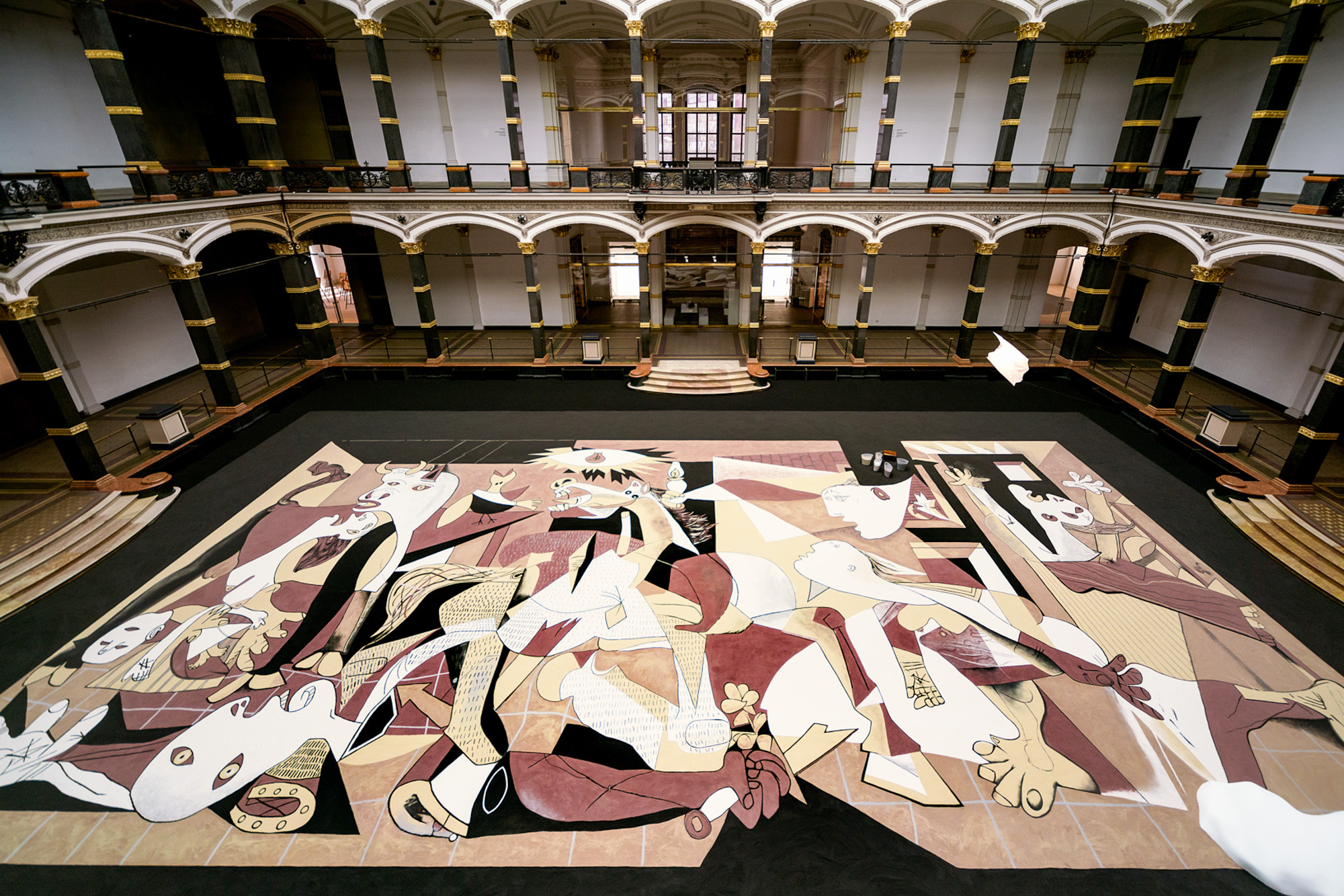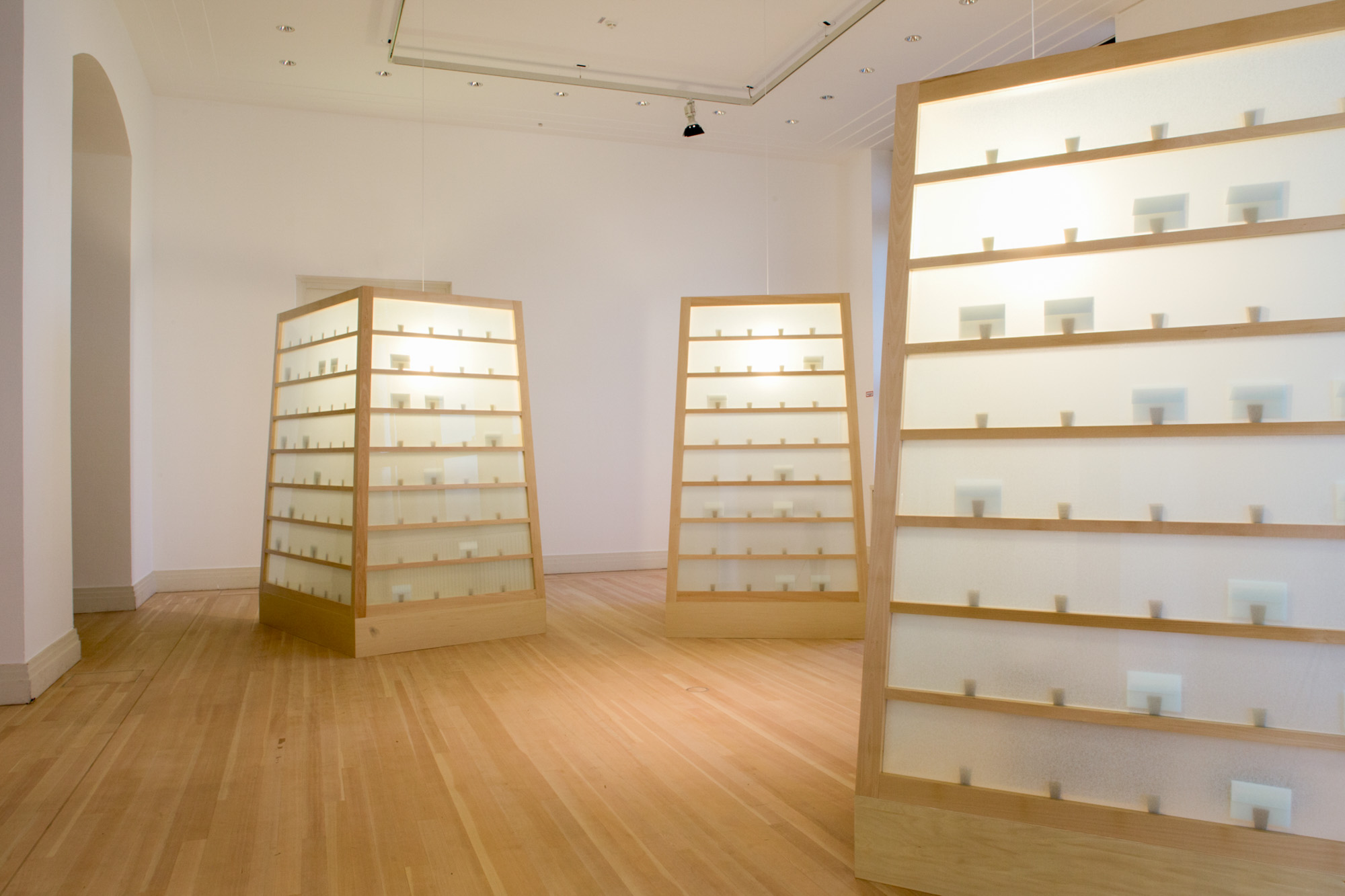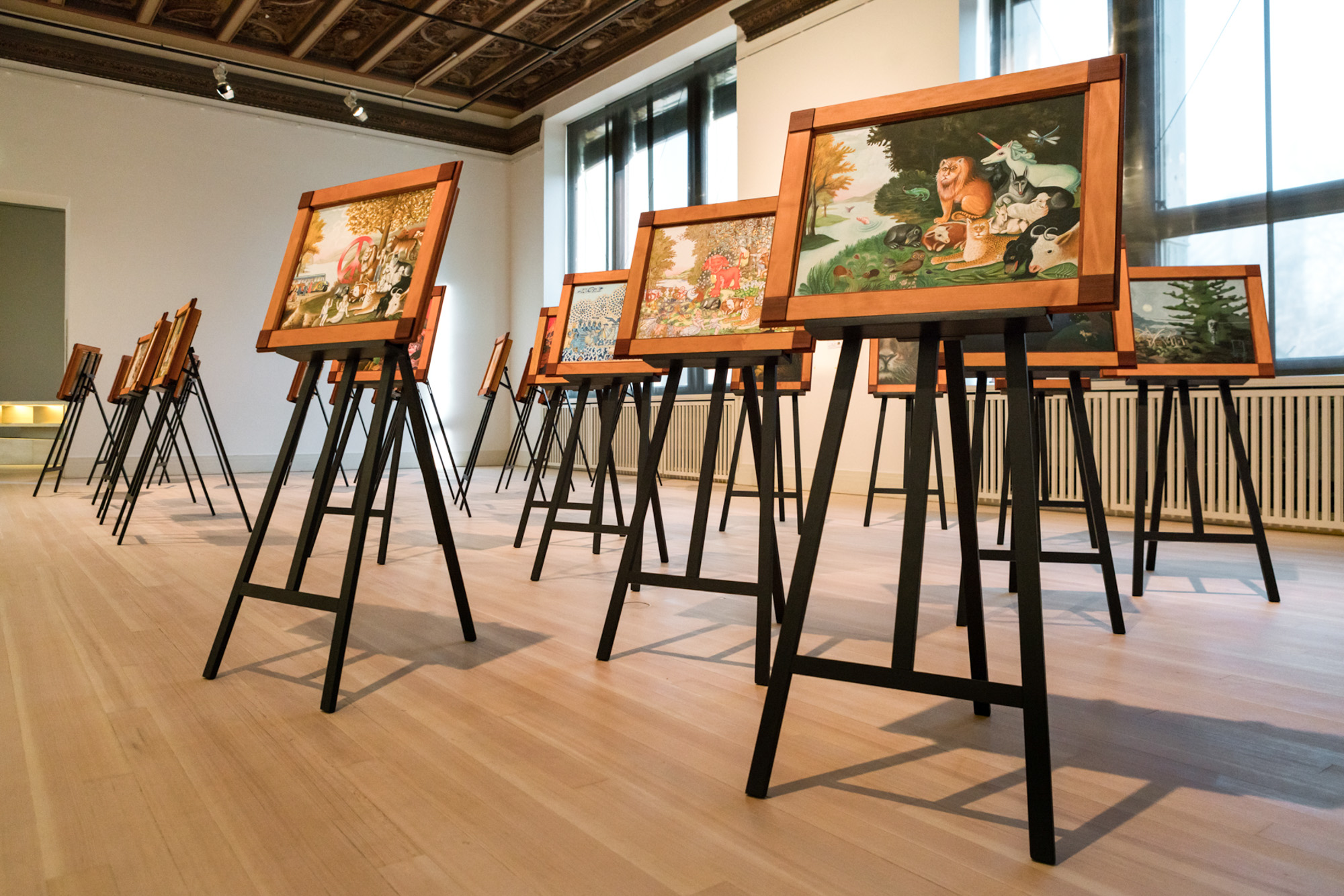A Special Power To Give: Interview with Lee Mingwei
By Ophelia Lai

Portrait of LEE MINGWEI. Photo by Matteo Carcelli, originally published in Gallery magazine (Sep/Oct, 2016) of the National Gallery of Victoria (NGV), Melbourne. Courtesy NGV.
Over the past three decades, Lee Mingwei’s performative conceptual practice has examined different experiences and forms of exchange between strangers, from sharing a meal to exploring a city. Lee’s first major institutional European survey, “禮 Li, Gifts and Rituals,” at Berlin’s Gropius Bau, brings together some of his long-running projects, as well as new pieces reconceptualized in light of Covid-19, which forced the museum to close for a time. Lee and I spoke over Skype to discuss how his works have matured, as well as the necessary adaptations the artist had to devise in response to the pandemic.
The Chinese term li is associated not only with ceremony and gifts but also a deeper ethos of respect stemming from Confucian values. How do you conceptualize li in your show and make it legible to the international audience at Gropius Bau?
Within any society there is a sense of li, because that’s a basic foundation of a civic culture. When I talk about li in terms of ritual, most Western people might think of Japan, China, Korea—societies influenced by Confucianism. However, I always remark, “I am fairly certain that in Germany, France, England, there is also a sense of ritual and ceremony that is heavily embedded within your culture.” And that’s when they say, “Oh yes, you’re right.” So in a way we are different but we are also the same. There are minor differences among each culture’s interpretation of what li could be, but the base is actually very similar.
Looking at my own practice, I’m trying to put myself in the place of the gift-giver. The way I see my work is that it’s a gift that I receive from somewhere—I don’t know where it’s coming from, but I’m the conduit of this gift. And hopefully through my own practice or through collaborations with singers or dancers, I can realize this gift physically for other people to enjoy. And maybe it transforms all of us when we encounter these gifts. I really believe that one day these gifts will return to where they came from; I don’t know when and I don’t know where this will happen but it will happen.
Could you elaborate on the idea of a gift coming back around?
Maybe this goes into another question: Where do I get my inspiration? I believe that these ideas or these projects look for me when I’m ready. It’s almost like I’m a vessel and I need to empty myself psychologically and emotionally in order to allow these ideas to come. And if some of these ideas are powerful, they might stay, but some of the ideas might not stay. So in a way, my brain and my psyche act as a sieve to catch these ideas. It’s almost like when you go to bed, and the next morning you wake up and some of the dreams you had were so powerful that they transform you. My projects are like these dreams that visited me. And then they stay, and they ferment, and then they grow.

Installation view of LEE MINGWEI
A thematic strand in your practice seems to be an ethics of care and helping others on a reparative journey following personal or collective trauma. We see this literalized in The Mending Project (2009/20), for instance, where you repair an article of clothing brought in by a visitor, whereas Guernica in Sand (2006/20) involves sweeping away Pablo Picasso’s famous image of war.
People often comment on this healing element in my work. I try not to see it that way because if I create my works thinking this is going to heal me and heal the people who come to encounter them, I’m putting myself in a situation where I’m assuming other people are broken and they are coming to be healed. That’s not where my work should stand, because each of us is unique and we have our own history and understanding of artworks.
Speaking of The Mending Project, the seed did arrive in a very traumatic moment of our history—when the airplane hit the World Trade Center [on 9/11]—and it took me nine years to process this trauma and come out the other end by creating a work that is about how humans can move forward with integrity, trust, and intimacy. I often don’t put that history in the didactic, just because I don’t want that to be the understanding of that work. Often, when people are having a conversation with the mender, this kind of information gradually comes out, and that’s when they have a deeper understanding of where this work came from. That makes the work much more complex rather than focusing on the trauma.
I remember someone in Tokyo said to me [of Guernica in Sand]: “I’m a traditional Indian dancer and I am so moved to see a contemporary work that could embody Shiva.” Shiva is the Hindu goddess of creation and destruction. That work embodies both. You need to have destruction in order to have space for creation. That for me is the best way to understand the work. In fact, I didn’t really see the work that way until she explained that to me, for which I am so grateful. That interpretation signaled the maturing of the work, meaning the work has its own life. It’s way beyond the creator, myself.
My works are entities that have different stages of maturity; sometimes they are like infants, sometimes they become like adults and have their own voice.
Several bodies of work, including The Dining Project (1997/2020), The Sleeping Project (2000/20), and Sonic Blossom (2013/20), are based on one-on-one interactions, but they also operate within the public space of the gallery—personal encounters are publicly shared through documentation, or due to the fact that other people are in the room when the exchange takes place. How do you negotiate the relationship between private and public?
I’ll answer this question in terms of if the pandemic didn’t happen because now it’s a very different ballgame! In Sonic Blossom there are several participations. The most immediate is the receiver, who has been invited to sit and receive this gift of song. Very quickly you realize all the other people who are watching it become a part of this short opera. Sometimes when the singer sees the response of the receiver, they get so emotionally affected that they can’t continue singing. So that very fluid exchange of emotion and gift, it's right in front of your eyes and it affects everyone who's watching it. The complexity and the different layering of participation in this work is something that you have to be there to experience, either as a bystander, or the receiver of the song, or the singer.
When the museum reopens, we will create a transparent plexi divider between the singer and the receiver. Plus I usually have the singer wear a custom-made costume but now they cannot wear that because of hygiene issues. Instead I’m asking them to wear something that is formal and celebratory. They need to feel like they are demigods with a special power to give.
During the museum’s closure, you devised online iterations of several works, including Sonic Blossom and The Letter Writing Project (1998/2020). How did the digital format impact the original concepts?
I wanted to create new projects rather than virtual integrations of the originals because both of these projects are very mature and it would not be fair to them to create an annex, something like “Virtual Sonic Blossom.” So that’s where the sister project of Sonic Blossom, Invitation for Dawn, came from.
It’s different in the way that it’s transmitted through a digital format, and there is no bystander. The other thing is that instead of singing the Franz Schubert song, I suggested that they select three songs they consider to be an “invitation for dawn.” For example, Derya, a singer from Turkey, selected a beautiful folk song that is about welcoming the sunrise and saying goodnight to the stars and the moon.
I immediately focused on Sonic Blossom when Stephanie [Rosenthal] asked me which of the projects we could present virtually, because this exchange could be quite easily transmitted and felt through a virtual medium. It’s not an object, like a Christmas gift that you have to open physically.
Could you talk about the significance of objects in your practice? Works like Fabric of Memory (2006/20) and The Living Room (2000/20) examine the emotional imprint left on objects, and the intimate act of sharing that with strangers. In the former, the collected items are carefully wrapped along with written descriptions, whereas The Living Room involves a live show-and-tell with the “guest.”
With Fabric of Memory—which is on the Gropius Bau website—the opening of the box, for me, is a physical and emotional ritual, reminding us that we are opening something private. And then closing the box, putting the bow together—in an ideal world, I would love for people to experience that. But with the pandemic, I’m fine with people going online, and just visually going through what’s inside the boxes.
If you put a personal item on the table, without a particular environment for you to explain the story, it is just a regular object. But once you explain that relationship between you and this object, then the object has a very different life, and others can relate to it in a much more emotionally involved way.
Typically with The Living Room, every weekend the host will be there and you can chat. Now we have to figure out how that can happen. Everyone has to wear a mask now in Germany, so that might be a way to deal with it. Also, usually the host might give you the object to feel, to have a sense of the weight, but now only the host can handle the object.

Installation view of LEE MINGWEI
You put a lot of thought into the design of the spaces for your works.
That is a big part of the work, because I believe we are very sensitive beings. For example, with The Letter Writing Project, the environment is supposed to give you a sense of serenity and tranquility, and also protection. The booth itself has three glass sides, and you are surrounded by other people’s letters. Hopefully that serenity can give you a space to create what you want to create, and to say what you want to the people who might come after you and read your letter. I usually work with other architects to come up with these designs because sometimes I have ideas but I don’t know how to build them.

Installation view of LEE MINGWEI
You also developed a sister work to The Letter Writing Project in light of the pandemic.
Yes, it's called Letter to Oneself (2020). I asked people to write letters to themselves focusing on their worries now and to conclude the letter with their hopes, and send it to Gropius Bau. When the museum reopens we’ll have a collection of all these letters, and if they live in Berlin, they can come and read these letters that they and other people wrote.
Your plan for The Letter Writing Project is to have this big burning ceremony when the project reaches its natural conclusion. Do you have a sense of when that might be? Will you have a separate end for Letter to Oneself when the pandemic is over?
The Letter Writing Project is still continuing and I don't really know when that would happen. For Letter to Oneself, because some people wrote from [other places], they can’t come to the museum to read their letter. My idea is to send them back to the writers when the show closes, and they can decide when to open the letters because each country has a different experience of the pandemic. If you feel like it is a safe and a good time to open the letter, then that’s the time to open it.
For your new commission, Our Peaceable Kingdom (2020), you invited 11 artists to reproduce a series of paintings by Edward Hicks centered on the notion of peace; each artist then invites another to do the same task, and so on. Why did you choose to focus on Hicks’ Peaceable Kingdom paintings (c. 1820–49)?
I encountered Edward Hicks in the early 1990s or late ’80s when I was living in Berkeley [California]. There was this amazing bookstore—which is still there—called Pegasus. I always went there just to hang around and look at different books, and one day I encountered this beautiful collection of paintings by Edward Hicks.
I always wanted to do a project about how each one of us interprets the idea of peace. We probably inherit this idea from our parents, our family, our country. The idea [for this project] was there for a long time but this is the right space and time to do it.

Installation view of LEE MINGWEI
I’m very excited that we have about 36 people, probably more, involved in this project now. It’s fascinating how each of them look at the two paintings—by Edward Hicks and by the artist who invited them to do the interpretation—and come up with their own idea of what peace might be.
All of these paintings, by artists who are from Afghanistan, India, Taiwan, Hong Kong . . . talk about how it could be for different races, ages, genders, and species to live together happily within a confined space. It’s very moving for me to see that strong commonality. I think politically it’s a mature time to bring this up, and the project will continue so hopefully it will grow even bigger in terms of the collection of the paintings that we have from different parts of the world.
Will The Dining Project and The Sleeping Project be restaged as planned for the Gropius Bau show?
We can’t really activate them [for hygiene reasons], but we do have documentation. The Dining Project will have videos of my previously staged dining experience with my dear friend from Japan. We are looking at the virtual edition of that, which will probably have a different name. I’m thinking about sending a recipe of biscuits and scones to a selected person, and for them to make that same recipe, and then we’ll have a Zoom afternoon tea together. We probably won’t do a virtual version of The Sleeping Project because you’re just going to be sleeping on Zoom!
You’ve said that documentation is something that you struggle with because your work is so focused on the live encounter.
Yes, it definitely brings a different challenge. For example, when Gropius Bau wanted to share virtually what Sonic Blossom might be for viewers who wanted to come to the museum later on, we went through different scenarios of how to present the work so it doesn’t lose its integrity and surprise.
I think [Covid-19] gives people like myself an opportunity to create something completely different and there is a silver lining to this crisis for me. It’s given me time and energy to examine what I was doing and also to think about the future. We’ll all work through this.
Ophelia Lai is ArtAsiaPacific’s associate editor.
This interview has been edited for length and clarity.
Lee Mingwei’s “禮Li, Gifts and Rituals” runs at Gropius Bau, Berlin, until July 12, 2020. Please check the exhibition web page for up-to-date information in light of Covid-19.







